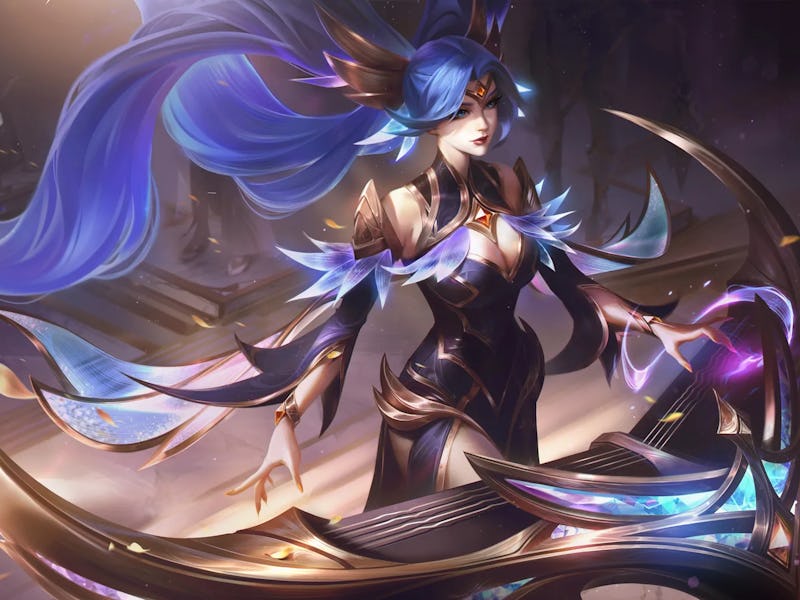15 Years Ago, League of Legends Grew a Whole Lifestyle and Culture
A firehose of content.

Few video games transcend the medium and gain Marvel-like ambitions to build a TV series, a set of spin-offs in a dizzying array of genres, and merchandise lines to boot. Even fewer actually succeed and begin to command a global audience one hundred million strong, even in far-flung Asian countries.
This particular star quality — combined with sky-high dreams of producing a successful massively multiplayer online role-playing game that blends shooter and fighting mechanics to create something entirely new — is what set up League of Legends for success. Fifteen years after Riot Games released League, a little upstart that resembled Dota 2, launched on October 27, 2009, millions of people still play the game every day.
There is no shortage of content to keep them from coming back. League of Legends now has 168 champions and a smattering of different modes to fit the occasion, from casual to hardcore — not to mention a seemingly endless pipeline of future updates to keep those players around.
“We also have countless champions that we’ve never shipped that may or may not be a reality one day,” says executive producer Paul Bellezza, “I did just tell one of my developers how I’d really like to ship a Yordle on a motorcycle though.”
Turmoil
Yasuo, in his True Damage skin, from League of Legends.
It hasn’t always been smooth sailing for the gaming giant. On October 15, developer Riot announced it was laying off 28 members on the game’s development team to make sure “we have the right expertise.” Bellezza, one of the team’s leaders, tells Inverse: “These changes weren’t easy, and I won’t sugarcoat that or bullsh*t you. We had to make some tough decisions, and it’s impacted people we care about. This included some longtime colleagues and emotions are still pretty raw. There’s always a human side of any change like this and that sucks.”
He adds that the layoffs also reflect some larger challenges facing League of Legends on its 15th anniversary.
“The truth is, not everything about League is where it should be right now, and we need to do some work to fix that,” Bellezza says. “We haven’t been delivering on what players want or need, consistently or timely. And we see it in surveys and other places where players tell us that they just don’t trust us to understand what’s important to them any more.”
A reputation for attracting toxic gamers
Ahri is both a nine-tailed fox who charms opponents down mid lane and the star of K/DA, a virtual pop group created to promote League.
Fifteen years ago, I remember my high school classmates giddily teasing each other about League. I wondered what the fuss was all about before ultimately diving in. League ended up being a huge part of my first relationship, many friendships, and even an awkward first date. When I initially tried to play, I was very bad, and the strangers I met online did not let me forget it. They insulted me aggressively, and it became a badge of honor to shake off their cruel words and keep playing. A weird culture has sprouted up around League as a result — we joke that to play League of Legends is to be toxic, but that it takes one to know one.
In a recent game of ARAM (all random all mid), which is one of League’s most casual modes, I crushed opponents as the magic-wielding spirit Karthus. Able to toss deadly orbs even after his demise, this champion helped set up my team to secure a clean and easy victory. Those on the enemy team were surely having a terrible time getting absolutely steamrolled by our overpowered forces, including a charming nine-tailed fox named Ahri.
In League, games can quickly become asymmetrical: a satisfying huge win for one side, and a brutally demoralizing loss for the other. At the end of my game, the rival team couldn’t resist hurling insults at our Ahri. “Ahri, you play like you’ve never won a game in your life,” said one player, a remark that likely wouldn’t trip up League’s internal censors for foul language but was still objectively hurtful. Those sorts of experiences add up to a sense of frustration, which sometimes make League feel bittersweet.
“We need time to cook”
Jinx, the protagonist and sometimes antagonist of the League Netflix adaptation, Arcane.
It’s 2024 and people are still eagerly logging onto League of Legends to climb up its ranks. The game has attracted players of various ages and given lapsed fans reasons to revisit. But how long can Riot keep that momentum going? Its flashy, annual Worlds esports event has transformed into a celebration of largely Chinese and Korean teams as interest and talent from North America dwindles. The virtual Korean pop group invented to promote the game once took the world by storm, but it’s been years since we’ve experienced that kind of cultural blitz. Meanwhile, it remains to be seen if the game’s Netflix animated adaptation Arcane can follow up on a well-received first season when Season 2 premieres in November. Riot wouldn’t share additional details on what exactly will be changing about League, or more about how the team plans to eventually expand again, Bellezza says that developers would be focusing on “pressing quality of life issues, like matchmaking,” and promised great things in the future, so long as fans are willing to wait.
“We need time to cook,” he says.